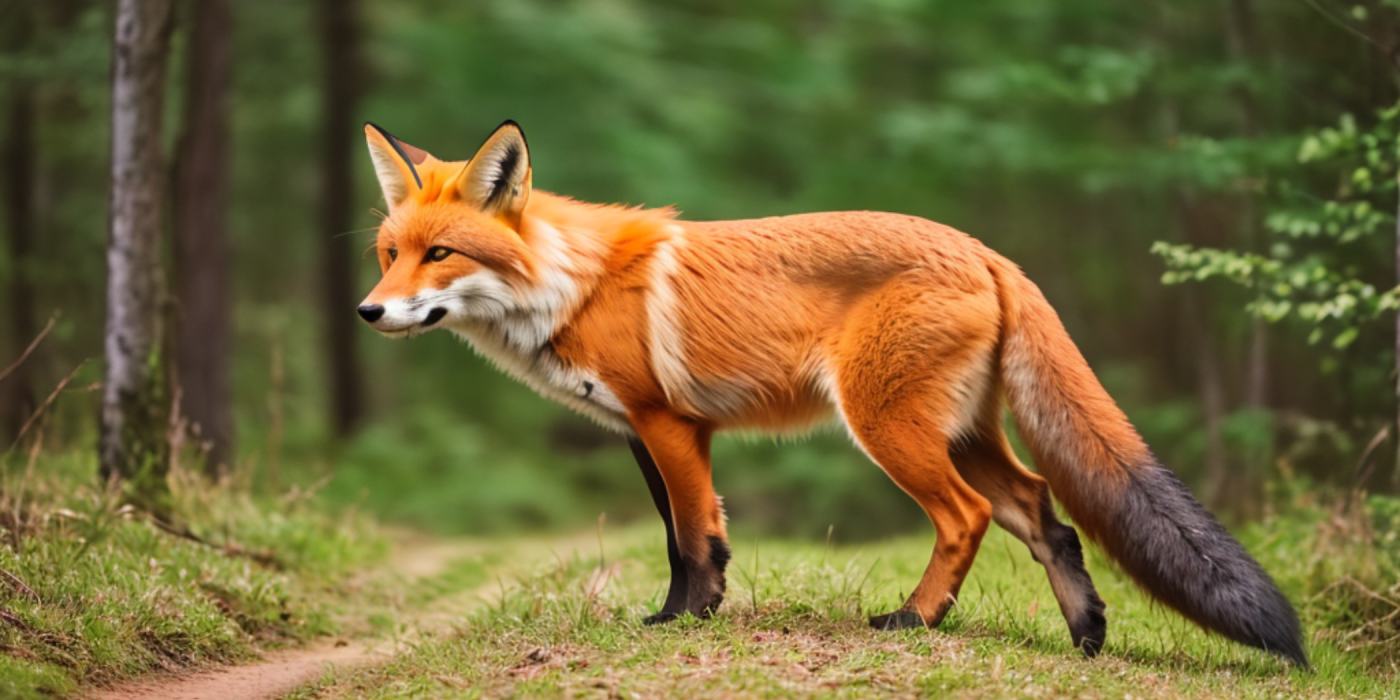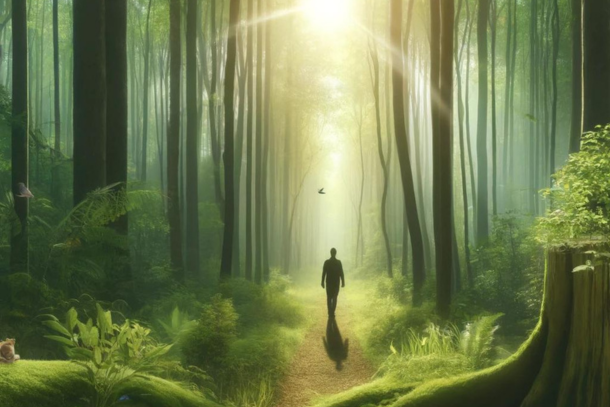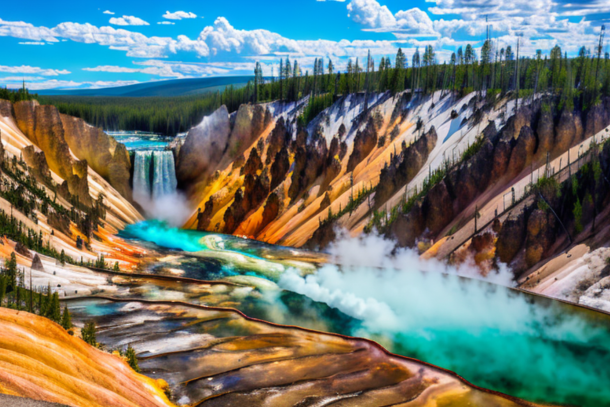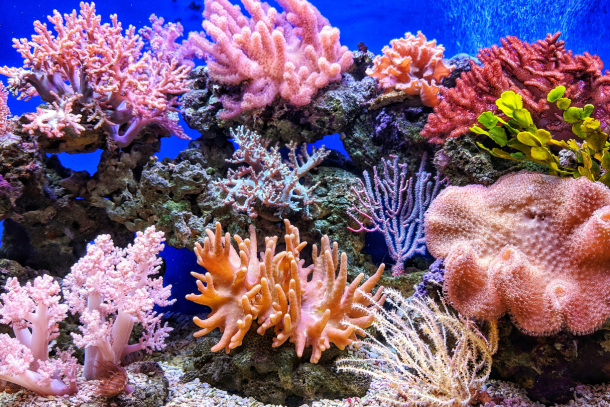Animal Tracking in the UK: Reconnecting with Wildlife Through Nature's Clues

In the British countryside, a mosaic of vibrant habitats unfurls, teeming with wildlife that often remains just out of sight. But for those eager to delve deeper, to truly understand the tapestry of life that thrums beneath the verdant canopy and alongside bubbling brooks, the ancient art of animal tracking presents an enticing opportunity.
The Value of Local Wildlife
Our British Isles are home to a myriad of creatures, from the elusive badger to the soaring buzzard. Each plays a crucial role in maintaining the delicate ecological balance, ensuring that our environment remains diverse and robust. It's not just about the individual creatures but the intricate web of interactions they form, from the food chains to mutualistic relationships. Understanding our local wildlife isn't merely a matter of curiosity; it's about appreciating the intricate ballet that nature orchestrates daily in our woodlands, meadows, and beyond.
Animal Tracking: A Time-Honoured Tradition
Long before the advent of modern technology and the hustle of urban life, our ancestors relied on animal tracking for survival. It was the keen eye that discerned a subtle print, or the ear that caught a rustle in the underbrush, that often made the difference between feast or famine. Today, while the stakes may have changed, the essence of tracking remains a profound way to connect with the natural world. It's an immersion, a method of grounding oneself and gleaning insights into the behaviours and habits of our wild neighbours.
In embracing the world of animal tracking, we embark on a journey not just of external discovery, but also of internal reflection, reminding us of the indelible ties we share with nature.
The Significance of Animal Tracking
The art of tracking, deeply embedded in our human history, has long held significance for myriad reasons, spanning from essential survival skills to the study and preservation of biodiversity. As we traverse through its relevance from times past to the present day, one can truly grasp the profound impact tracking has on understanding the world around us.
Historical Perspective: Ancient Hunting and Gathering
From the dawn of humankind, our ancestors relied on their adept tracking skills for survival. The ability to decipher subtle cues in the environment — be it a faint footprint or a broken twig — often spelled the difference between a successful hunt and returning empty-handed. This prowess didn't solely revolve around hunting; it was also instrumental in gathering edible plants and avoiding potential predators. By reading the signs of the land, early humans gained a deeper connection and understanding of their surroundings, ensuring their continued existence and evolution.
Modern-Day Importance
Fast forward to the present day, and while most of us no longer rely on tracking for sustenance, its significance hasn't waned. Conservationists and ecologists utilise tracking to monitor animal populations, ensuring their well-being and studying intricate behaviours. By understanding where and how animals move, we can identify regions of ecological importance, thus aiding in targeted conservation efforts. Furthermore, as we promote biodiversity and ecological balance, tracking offers invaluable insights into animal interactions, migrations, and habits, enriching our collective knowledge of the world's fauna.
Basic Principles of Tracking
Animal tracking, a craft as old as humanity itself, requires a keen sense of observation and an innate patience that allows one to truly connect with nature. It's an art, where every small detail matters, and every rustle and print tells a story.
Developing Observation Skills and Patience
For the untrained eye, the British countryside might just seem like a vast expanse of greenery, but for a tracker, it's a canvas painted with clues. Developing observation skills is crucial. It's about noticing that slightly bent twig, a faint paw print in the mud, or a tuft of fur caught on a bramble. More than just seeing, it's about interpreting. What might seem mundane to many can reveal an entire narrative of an animal's journey. But these skills aren't developed overnight. Patience is the key. Nature doesn't always reveal her secrets readily. One must wait, watch, and learn. With time, patterns emerge, and the woods and fields begin to speak in a language only trackers understand.
Recognising Environmental Clues
Beyond the obvious signs, the environment offers a plethora of subtle hints. Disturbed foliage might indicate a recent passage. A particular bird's call could alert the observant to a predator's presence. And then there are the audible cues – the snap of a twig, the soft thud of hooves, or the distant hoot of an owl. Each of these holds significance. To recognise these environmental clues is to read the living, breathing storybook of the British wilderness.
Recognising Animal Tracks
One of the most enchanting and educative aspects of delving into the world of animal tracking is the art of deciphering the footprints left behind by our wildlife. These impressions in mud, sand, or snow provide a captivating window into the life of the creature, giving us clues about their behaviour, diet, and habitat.
Differentiating Tracks
The first step in becoming adept at animal track identification is understanding the basics:
By Species
Each species has a distinct footprint, moulded by evolution to best serve their lifestyle. A rabbit's hop will differ starkly from the prowling step of a fox.
By Size
While size can sometimes be deceptive due to ground conditions, generally, larger prints belong to larger animals. However, always consider the depth and clarity of the print.
By Gait
The way an animal moves can be discerned from its tracks. Is it a run, walk, or hop? The spacing and pattern of the tracks can reveal much about an animal's speed and purpose.
Spotlight on British Wildlife Tracks
In the UK, our diverse range of habitats from woodlands to heathlands, host a rich array of fauna, each leaving their unique signature on the landscape.
Foxes
Distinguished by their oval prints and claw marks, a fox's tracks can often be seen meandering along well-trodden paths.
Deer
Deer tracks are cloven-hoofed and can vary significantly in size depending on the species, from the petite Muntjac to the larger Red deer.
Badgers
These nocturnal creatures have broad, robust footprints, with five clear toes on both front and back feet.
Beyond Footprints: Other Animal Signs
While footprints can provide a thrilling first hint of a nearby animal, the landscape is littered with a plethora of other, often overlooked, signs. These subtle cues, once mastered, can transform the casual observer into a keen-eyed detective of the wild.
Scat Identification: Nature's Storyteller
Perhaps not everyone's cup of tea, but scat – or animal droppings – offers a treasure trove of information. The size, shape, and content can provide invaluable insight into the species, diet, and even the health of an animal. For instance, fox droppings often have a distinct, musky odour and might contain remnants of berries or small bones, while the scat of herbivores like deer is usually pellet-shaped and consists of plant material. Being able to decipher these clues not only aids in identification but fosters a deeper understanding of the intricate web of life in a given habitat.
Feeding Signs and Habitats
Beyond scat, the traces left behind from feeding can be just as telling. Gnawed bark might indicate the presence of a rabbit or deer, while claw marks on trees could be the handiwork of a climbing badger or fox.
Additionally, nests, whether found high in the treetops or burrowed underground, shed light on the creatures that constructed them. Burrows, for instance, can vary significantly in size and shape, depending on whether they're the home of a badger, rabbit, or mole.
Tools of the Trade
In the quest to delve deeper into the world of animal tracking, arming oneself with the right tools can immensely enhance the experience, making the intricate details of the wild more discernible. While traditional tools have their unique charm, modern technology also offers a plethora of resources to aid both novices and experts alike in this engaging activity.
Essential Gear for Tracking
The foundation of any tracker's toolkit lies in the basics – items that have been trusted by generations of wildlife enthusiasts.
-
Field Guides: These comprehensive books are essential companions. Filled with illustrations and descriptions, they offer valuable insights into recognising and differentiating various animal signs. Whether you're deciphering a footprint or identifying a feather, a good field guide tailored to British wildlife is indispensable.
-
Plaster for Casts: Coming across a particularly distinct animal print can be an exciting discovery. Plaster allows you to make a cast of these tracks, preserving the intricate details for further study or as a keepsake.
-
Measuring Tools: A simple ruler or measuring tape can be invaluable. By measuring the size and distance between tracks, you can glean more information about the animal's size, pace, and direction.
Embracing Modern Technology
As we progress into the digital age, technology offers tools that can complement traditional tracking methods.
-
Mobile Apps: There are several apps tailored for animal tracking, offering quick identification features, logging options, and even augmented reality to overlay potential matches on a track.
-
Websites: Numerous online communities and websites are dedicated to animal tracking in the UK, providing platforms for enthusiasts to share findings, discuss identifications, and learn from each other.
Respectful and Ethical Tracking
Animal tracking, at its heart, is more than just a recreational pursuit; it's a bridge to understanding and respecting the creatures that share our environment. To ensure that our enthusiasm doesn't inadvertently lead to disturbances, it's essential to approach the activity with both reverence and responsibility.
Minimising Disturbance to Habitats
Every footprint we leave, every branch we carelessly snap, can have implications for the delicate balance of a habitat. It's crucial to navigate natural spaces with an acute awareness of our surroundings. When attempting to get a closer look at tracks or signs, we must always ensure that we're not trampling on nesting areas, disturbing food sources, or altering an animal's familiar route.
Avoiding Stressing or Cornering Wild Animals
While the thrill of spotting a wild creature is unmatched, we must always remember that these animals are in their homes. A direct encounter with humans can be highly stressful for wildlife, possibly leading to aggressive or panicked reactions. Always maintain a safe distance, move slowly, and avoid making loud noises. The goal is observation, not interaction.
The Importance of Leaving No Trace
The 'leave no trace' principle isn't just a mantra for campers and hikers. It's equally pertinent for trackers. We must refrain from leaving any litter, and when examining tracks, it's advisable to resist the urge to mark or cordon off the area. Instead, take photographs, make notes, and then move on, ensuring the site remains as undisturbed as possible.
Animal Spotting: Engaging Safely and Respectfully
The thrill of spotting a wild animal in its natural habitat is unparalleled. However, our enthusiasm to get a closer look or snap the perfect photo can sometimes unintentionally disturb or even endanger these creatures. Therefore, understanding how to engage safely and respectfully with wildlife is not only beneficial for us but is vital for the well-being of the animals.
Observing without Disruption
Engaging with wildlife begins well before you spot an animal. It’s rooted in preparation, mindfulness, and respect. Here are some key pointers:
- Stay on Designated Paths: Straying from marked trails can destroy delicate habitats and increase the risk of encounters with wildlife.
- Use Binoculars or Telephoto Lenses: This allows you to observe animals from a distance without encroaching on their space.
- Remain Silent and Still: Avoid sudden movements or noises which might startle or stress the animals. If you’re with children, educate them on the importance of quiet observation.
Safety First: Encounters with Larger Wildlife
While the UK is home to generally non-aggressive wildlife, some animals can pose potential risks if surprised, threatened, or if young ones are nearby.
- Educate Yourself: Familiarise yourself with the types of wildlife you might encounter. Knowledge is the first step in ensuring safety.
- Maintain a Safe Distance: Never approach wild animals, especially mothers with young.
- Carry a Whistle or Bell: Such noises can warn animals of your approach, preventing surprise encounters.
- Always Avoid Feeding: Besides being potentially harmful to the animal, feeding can also lead to them associating humans with food, which can lead to aggressive behaviour.
Joining Tracking and Wildlife Watching Groups
Animal tracking is both an art and a science, with intricacies best grasped when one has the privilege of learning from those who've dedicated their lives to the practice. By joining a tracking or wildlife watching group, you immerse yourself in a community of like-minded enthusiasts, gleaning insights from their collective experiences.
The Perks of Learning from the Experienced
Seasoned trackers and naturalists bring a wealth of knowledge to the table. Their trained eyes spot subtle signs that novices might overlook, from the faintest tracks on soft ground to the concealed nests in thick canopies. Through their stories and demonstrations, beginners can quickly grasp complex tracking principles and avoid common pitfalls.
Furthermore, these experts often recount fascinating tales of encounters, highlighting behavioural nuances of different species. Their deep-rooted respect for wildlife serves as a poignant reminder of the ethics integral to the activity.
Noteworthy British Tracking Groups and Workshops
The UK boasts a vibrant community of tracking and wildlife enthusiasts. Among the most acclaimed organisations are:
-
Woodland Ways: Known for their comprehensive tracking courses that span various habitats, from forests to coastal regions.
-
Trackers UK: Specialising in advanced workshops, they delve deep into animal behaviour and habitat usage.
-
Nature's Calendar: While not exclusively a tracking group, they encourage the public to record wildlife sightings, aiding in larger conservation efforts.
By joining these groups or partaking in their workshops, budding trackers stand to significantly enrich their skills, forming lasting bonds with fellow nature lovers in the process.
Conclusion
In our rapidly urbanising world, the art of animal tracking offers a rare window into the enchanting realm of nature. As we decipher the delicate footprints left behind or scrutinise the tell-tale signs of an animal's presence, we are not just learning about the creatures we share our land with; we're also forging a more profound, more visceral connection with the natural world.
Reconnecting with Nature
Animal tracking is far more than a mere hobby or pastime. It's a dialogue, an ongoing conversation between man and nature. In the subtle imprints on a muddy trail or the faint rustling of leaves, nature whispers its secrets to those patient enough to listen. For many, this practice rekindles a primal bond, one that has dimmed in the haze of modern life but never truly vanished.
A Responsible Pursuit
Yet, as with all dialogues, the conversation of tracking requires respect and understanding. We must remember that our forays into the wilderness are invasions into the private lives of animals. It's paramount to tread lightly, to observe without intruding, and to always prioritise the well-being of our wild counterparts.
By honing our tracking skills responsibly, not only do we become adept naturalists, but we also evolve as more conscientious inhabitants of this planet. So, as you embark on your next tracking expedition, carry with you not just a field guide or binoculars, but a deep-seated reverence for the wonders that await.
Related to this article are the following:
I do hope you have enjoyed this article and hope that you will subscribe to my newsletter so you can get the latest information about all things naturally relaxing.
Stay in touch, join the Naturally Relaxing Newsletter
Newsletter Signup
Post Your Comments
or post as a guest
Be the first to comment.
Latest articles in Nature

Exploring the UK’s Most Serene Coastal Trails

The Healing Power of Nature: Forest Bathing Explained

Sustainable Gardening: Tips for Growing Your Own Herbs

The Yellowstone Supervolcano: A Sleeping Giant

The Lost City of Atlantis: A Geological Mystery






